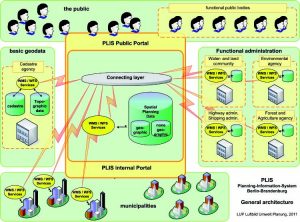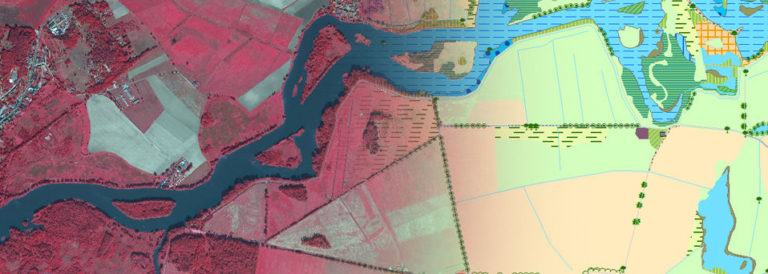In order to standardise and document the steps involved in drawing up an urban land-use plan, the states of Berlin and Brandenburg operate an information and management system for urban land-use planning and regional planning, the Berlin-Brandenburg Planning Information System – PLIS.
PLIS is the largest and most complex spatial planning information system in Germany: it contains almost 14,000 development plans, 2,500 regional and land use plans, several thousand individual approvals and participation procedures and other procedures. For each plan, the adopted and approved content as well as all amendments are included in text, features and maps.
Technical support for spatial planning and urban land-use planning
Spatial planning and urban land-use planning in Germany’s federal system requires, in accordance with the principles of subsidiarity and the counterflow principle, intensive technical involvement of various administrative and social bodies, defined by rules and standards, through to the involvement of those affected (public participation).
The preparation and approval of a single development plan, for example, involves 11 individual steps at municipal level and at the higher planning levels up to the highest approval authority. This does not include any necessary amendments. A large number of stakeholders are involved in this process.
Planning changes are proposed, variants are discussed, legally defined public interest organisations are involved and finally a plan is adopted and approved by the approval authorities.
PLIS system architecture
PLIS is a completely server-based system. The user only needs Internet access; no software or components are installed on the user side.
PLIS has a factual data and an integrated geodata area. The basic systems are ORACLE and open source MapServer technologies.
Data structures and dependencies can be easily changed at any time without having to reorganise the data management. In fact, the user is able to adapt administrative references, levels, fields and processes to changed framework conditions, e.g. new legal requirements. This is made possible by a data model with extensive parameterisation. This means that structures and controls are determined via descriptions. The development of efficient system utilisation is essential for this structure in order to guarantee high performance.


